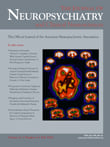Retrospective Posttraumatic Amnesia in Traumatic Brain Injury
To the Editor: Clinicians may need to determine the severity of a traumatic brain injury (TBI) that occurred many years ago. This can be challenging when there is no direct information about the remote TBI. One method of retrospective assessment is the duration of posttraumatic amnesia, the period during which a person is disoriented and unable to lay down new memories after a head injury. 1 , 2 Few modern investigators have studied retrospective posttraumatic amnesia. 3 Our study investigates the value of retrospective assessment of posttraumatic amnesia in a stratified sample of post-TBI patients using the Rivermead Posttraumatic Amnesia Protocol. 4
Methods
We evaluated post-TBI (mostly motor vehicle) patients who presented for residual cognitive impairment. They underwent a Mini-Mental State Examination (MMSE) and tests of attention (digit span), verbal fluency (animals/minute), verbal memory (10-item verbal learning task), and the Frontal Assessment Battery (FAB) for executive functions. 5 No individual participants were identified, and the information was coded anonymously.
All participants were men (U.S. veterans) with medical records on their prior TBI. Inclusion criteria included absence of prior cognitive rehabilitation, litigation, substance abuse, psychoactive medications, and other neurological or psychiatric disorder that might affect cognition. Participants were divided into a recent TBI group (23 patients 2–5 years post-TBI) and a remote TBI group (23 patients 6–15 years post-TBI). Group members were pairwise matched on medical record documentation of loss of consciousness (mild <60 minutes, moderate 1–24 hours, severe >24 hours), age (within 3 years), and education (within 3 years). The Rivermead Posttraumatic Amnesia Protocol, which consists of five questions, established the duration of posttraumatic amnesia to the nearest hour. 4
Results
The recent and remote groups were comparable in current age (37.06±7.02 years versus 38.11±13.01), of age at the time of TBI (34.17±7.10 years versus 27.66±13.78), and years of education (13.72±2.27 years versus 12.85±3.01). The posttraumatic amnesia duration (hours) did not differ between the recent and remote groups (21.89±29.83 hours versus 20.76±28.29). Within the recent TBI group, the retrospective posttraumatic amnesia negatively correlated with four out of the five variables (MMSE: r=−0.79, F=19.60, df=1, 22, p<0.01; attention: r=−0.53, F=5.02, df=1, 22, p=0.03; verbal fluency: r=−0.61, F=8.45, df=1, 22, p=0.01; verbal memory: r=−0.66, F=8.55, df=1, 22, p=0.01). Within the remote TBI group, there were no significant posttraumatic amnesia-cognitive correlations.
Discussion
Clinicians often assess whether patients have cognitive deficits from an old traumatic brain injury. Without direct access to medical records about an old head injury, the retrospective posttraumatic amnesia is a potential indicator of residual cognitive deficits from TBI. Our preliminary study found that the retrospective posttraumatic amnesia duration correlated with cognitive impairments up to 5 years post-TBI. After 5 years, however, the retrospective posttraumatic amnesia did not correlate with cognitive deficits.
Investigators previously tested the Rivermead Posttraumatic Amnesia Protocol for retrospective posttraumatic amnesia duration among patients who were within 2 years of injury, but not in those with more remote head injuries. 4 This study suggests that retrospectively obtained posttraumatic amnesia is useful up to 5 years post-TBI, but becomes unreliable after that. Despite limitations, such as the small number of male participants, the findings recommend further investigation exploring retrospective posttraumatic amnesia in larger populations and in comparisons with prospective measures of TBI.
1. Trzepacz PT, Kennedy RE: Delirium and posttraumatic amnesia, in Textbook of Traumatic Brain Injury. Edited by Silver JM, McAllister TW, Yudofsky SC. Arlington, Va, American Psychiatric Publishing, 2005, pp 175–200Google Scholar
2. Frey KL, Rojas DC, Anderson CA, et al: Comparison of O-Log and GOAT as measures of posttraumatic amnesia. Brain Inj 2007; 21:513–520Google Scholar
3. McMillan TM, Jongen EL, Greenwood RJ: Assessment of post-traumatic amnesia after severe closed head injury: retrospective or prospective? J Neurol Neurosurg Psychiatry 1996; 60:422–427Google Scholar
4. King NS, Crawford S, Wenden FJ, et al: Measurement of post-traumatic amnesia: how reliable is it? J Neurol Neurosurg Psychiatry 1997; 62:38–42Google Scholar
5. Dubois B, Slachevsky A, Litvan I, et al: The FAB: a frontal assessment battery at bedside. Neurology 2000; 55:1621–1626Google Scholar



